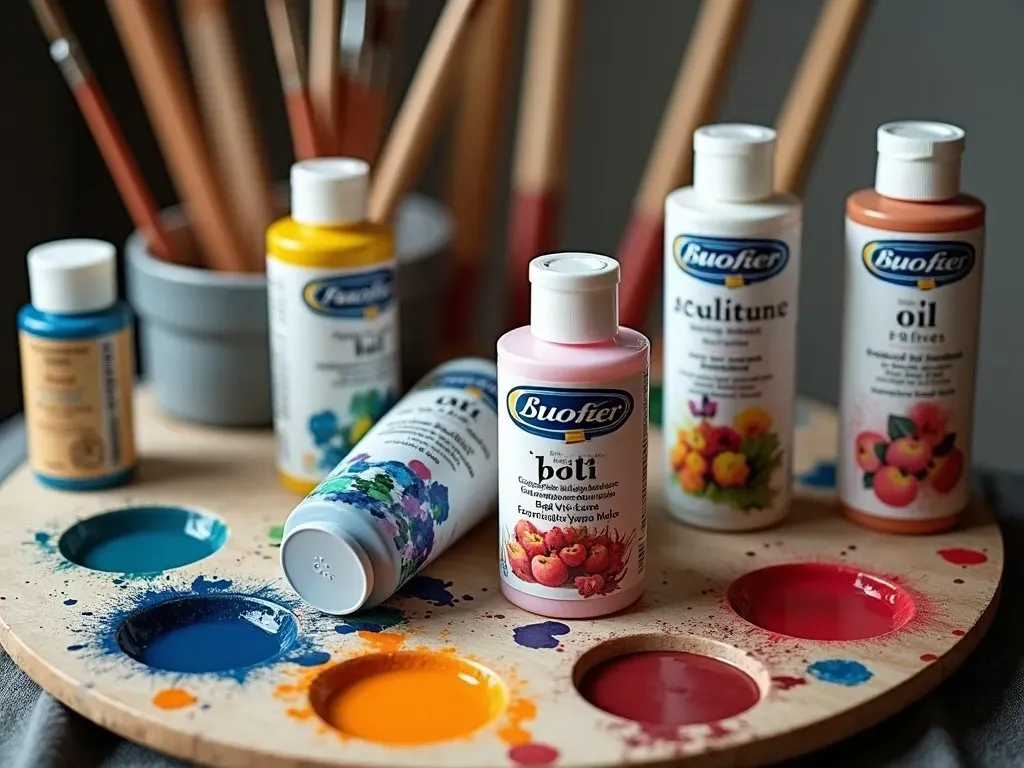Qualities of Oil Paint: Oil paint is a type of slow-drying paint consisting of particles of pigment suspended in a drying oil, commonly linseed oil. This medium has been a fundamental choice in Western art for centuries, offering artists the ability to create intricate and vibrant artworks. What makes oil paint truly stand out are its unique qualities that cater to various artistic Techniques and styles.
Understanding the Characteristics of Oil Paint
Oil paints are renowned for a variety of reasons, forging their path as a preferred medium for painters across the globe. Below are some characteristics that best describe oil paint:
-
Rich Color and Pigmentation: The high pigment concentration in oil paint results in vibrant, intense colors. Unlike watercolors, which can appear washed out, oil paints maintain their richness once dried.
-
Versatility: Oil paint can be manipulated in numerous ways. Artists can choose to create thick, textured applications or smooth, thin layers of paint, allowing for a broad spectrum of styles.
-
Opacity and Transparency: Oil paint offers a fantastic range of opacity. Artists can achieve various effects using opaque, transparent, or translucent layers, which enables depth and richness in their artworks.
-
Slow Drying Time: The extended drying time of oil paint allows artists to work on a piece over several sessions, blending colors effortlessly and correcting mistakes without rushing.
-
Blendability: The ability to blend colors seamlessly is a significant advantage of oil paint. This quality allows for smooth transitions in tones, enhancing the overall visual impact of the artwork.
-
Durability: Once fully dried, oil paint creates a robust film resistant to environmental factors, meaning that artworks in oil paint can retain their beauty for decades.
Table: Comparison of Oil Paint Qualities
| Quality | Description |
|---|---|
| Rich Color | High pigment concentration leads to vibrant and intense hues. |
| Versatility | Can be used in various applications, allowing for different painting styles. |
| Opacity/Transparency | Offers a range from opaque to translucent, enabling depth and layering effects. |
| Slow Drying Time | Provides ample time for correction and manipulation of the paint before it sets. |
| Blendability | Allows for smooth transitions between colors, enhancing depth in artwork. |
| Durability | Creates a robust and weather-resistant film when fully dried, ensuring longevity of the piece. |
The Mechanism Behind Oil Paint
Oil paint is unique in its composition and drying process. The oil acts as a binder, suspending the pigment particles and allowing them to adhere to surfaces like canvas or wood. The most common oil used is linseed oil; however, artists often explore other types, including safflower, poppy, or walnut oil for different effects.
Upon application, the oil paint undergoes a chemical process known as oxidation, where it reacts with oxygen in the air leading to its drying. This constant interaction with air is what allows for the slow drying characteristic, as opposed to mediums like acrylic which dry through evaporation.
FAQ About Oil Paint Qualities
Q1: What is the best oil paint for beginners?
A1: Many beginners find it useful to start with student-grade oil paints because they provide a good balance between quality and affordability. Brands like Winsor & Newton and Gamblin offer excellent options.
Q2: Can I use oil paint on watercolor paper?
A2: While it is possible, it is generally not recommended. Watercolor paper is designed for water-based mediums and may not hold up well with the heavier application of oil paint. Instead, use canvas or specially prepared panels.
Q3: How do I speed up drying time for oil paint?
A3: You can speed up the drying time by adding a medium like "Liquid" or using a drying agent such as cobalt drier, but it’s essential to follow the manufacturer’s guidelines to avoid altering the paint’s characteristics adversely.
Q4: Why do some oil paints smell more than others?
A4: The smell often depends on the type of oil used and the presence of any pigments that might have a strong odor. More refined oils usually have a milder scent.
Techniques Leveraging the Qualities of Oil Paint
Artists often utilize the distinctive qualities of oil paint through various techniques to enhance their creations. Here are some notable oil painting techniques along with their specific applications:
-
Glazing: A technique that involves applying a thin transparent layer of paint over a dried layer to enhance depth and luminosity.
-
Impasto: This method involves applying paint thickly to the canvas, creating texture and dimension. It takes advantage of oil paint’s rich viscosity.
-
Wet-on-Wet: Applying wet oil paint onto wet paint can create softer edges and smooth transitions, allowing for glaze-like effects.
-
Scumbling: A technique where a thin, opaque layer of paint is brushed over a dried surface, allowing for a varied texture and color.
-
Fat over Lean: A principle in oil painting that states thicker (fat) paint should always be applied over thinner (lean) paints to prevent cracking as the painting dries.
Fact: In terms of historical significance, oil painting has been a dominant medium since the 15th century, having evolved through periods to become central to artistic innovation. Artists like Van Gogh and Rembrandt pushed the boundaries of this medium, defining its characteristics in their iconic works.
Final Thoughts on Oil Paint
Oil paint remains a timeless medium embraced by countless artists, leveraged for its unique qualities that allow for creativity and precision. The combination of cosmetic attributes, such as vibrant color and versatility, paired with excellent practical aspects like durability and drying time, keeps oil paint relevant in the modern art scene.
For more detailed information on oil paint, visit Britannica’s oil painting article.
Choosing oil paint not only empowers the artist’s expression but also adds a depth that resonates through time, delivering both beauty and permanence in artistic endeavors.
